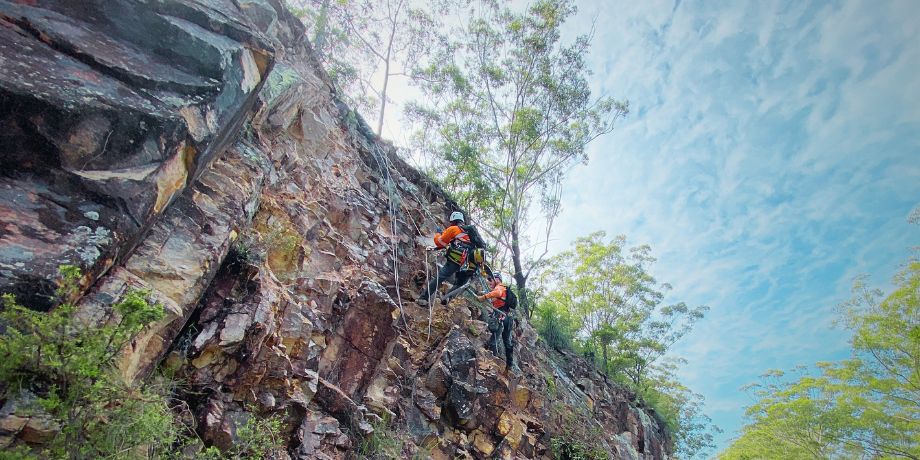
When our rope access team got a callout to help stabilise a roadside slope using rock scaling techniques, we knew it was going to be a big job. The slippery slope in question was a sweeping 100 metre long blind bend on the road to Mount Mee (northwest of Brisbane). That’s a lot of rock to cover!
This popular public road also draws scores of weekend site seekers and motorcycle enthusiasts – and services the local Ocean View community and surrounding rural properties. Which meant that any stabilisation work undertaken would have to keep the public safe whilst also keeping the road open.
1. Create a safe work zone at road-level
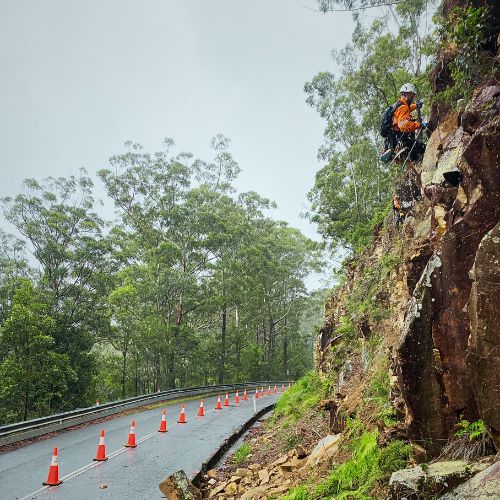
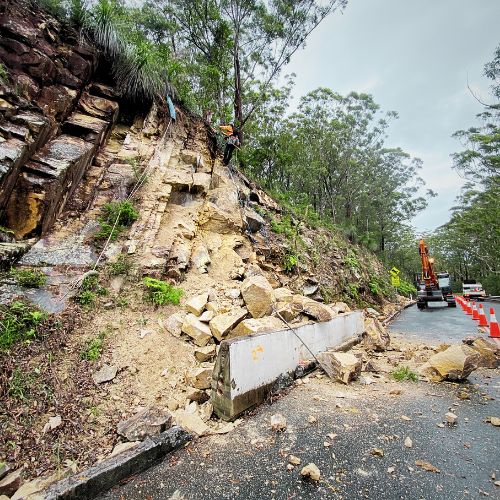
Before work could begin, we teamed up with the client and other contractors to establish a safe work zone at road-level.
This required obtaining permission for a partial lane closure – ie closing off the inner lane (closest to the unstable slope) and diverting road traffic to use the outer lane.
With the implementation of a traffic management plan controlling the traffic flow between scaling activities – as well as concrete barriers below work zones – public safety was maintained.
2. Review geotechnical survey findings
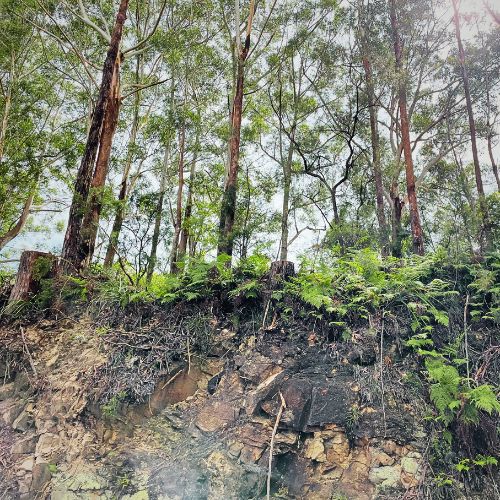
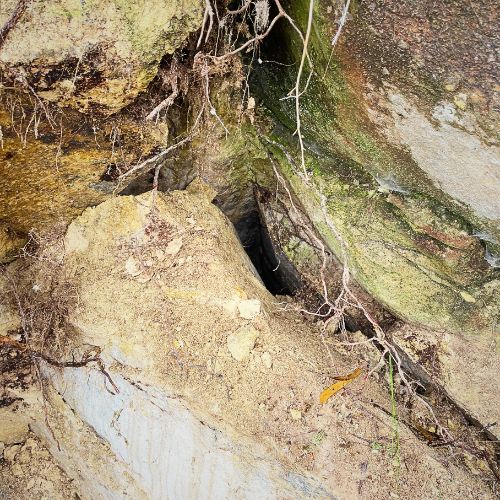
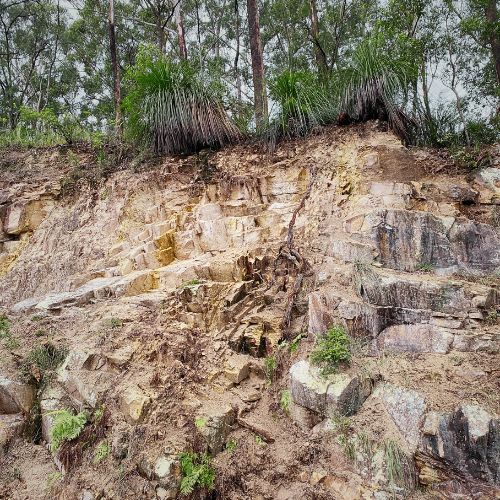
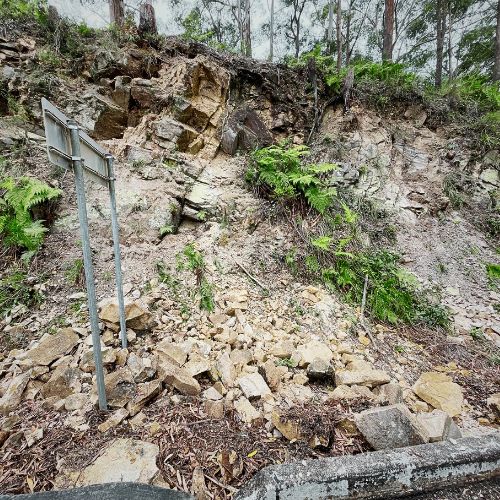
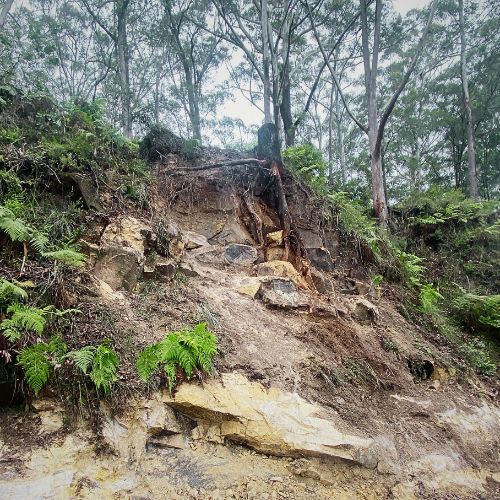
The client’s geotechnical engineer had already undertaken an initial assessment of this rocky roadside slope (or batter) connecting the road surface to the land above.
He had observed that, over time:
- Inclement weather had eroded the ground surface at the crest of the batter (some of which had cascaded down the slope to add to road drainage issues)
- Vegetation, saplings and boulders on the face of the batter had become loose and unstable (some falling down the slope and posing a risk to passing cars)
- The roots of overhead trees had spread enough to impact the once stable rockface behind the batter, causing the rock to fracture (also known as rock jacking)
3. Employ rope access for rock scaling
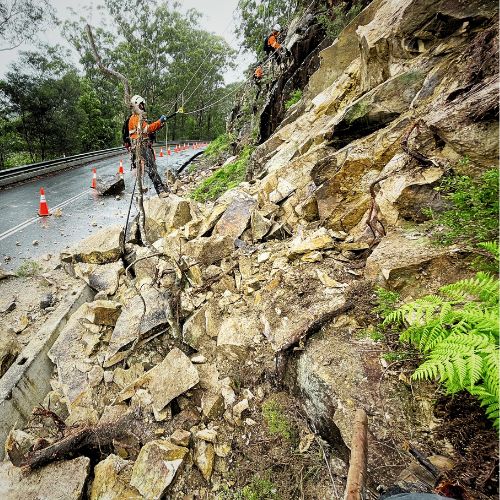
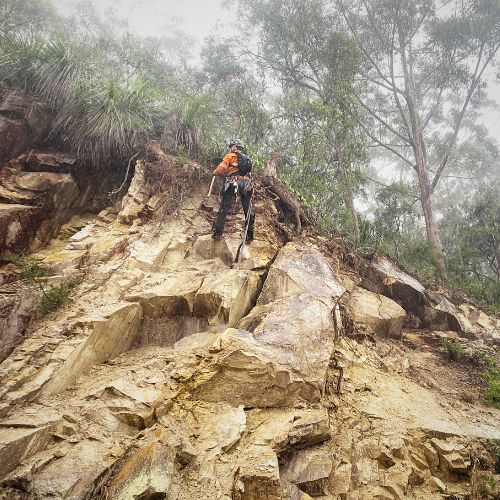
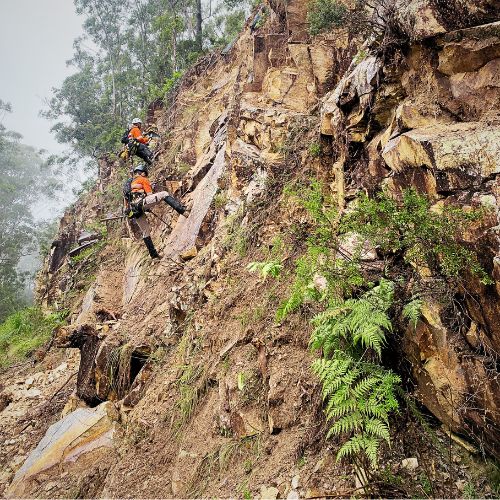
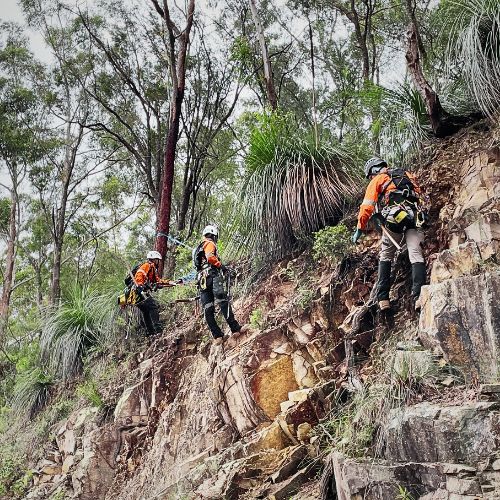
Armed with the engineer’s findings and scope, our technicians identified natural anchor locations and established rope access systems to provide safe access to work locations.
From there, our team systematically hand scaled the batter – removing loose rocks and boulders, unstable vegetation, trees and saplings identified as potential risks. To remove the larger fractured rocks behind the batter, a pneumatic airbag jacking system was employed.
Before returning to ground, all scaled material was pushed down to road level so it could be cleared away by contractors.
Result: A stabilised slope that’s easier to monitor
This cleared 100m section of batter is now far more stable, which means that any immediate risks to passing road traffic have been reduced.
It’s also much easier now for engineers to monitor and assess the condition of the batter. Which makes it more likely they’ll identify any new slope stabilisation risks before they become a road safety hazard.
